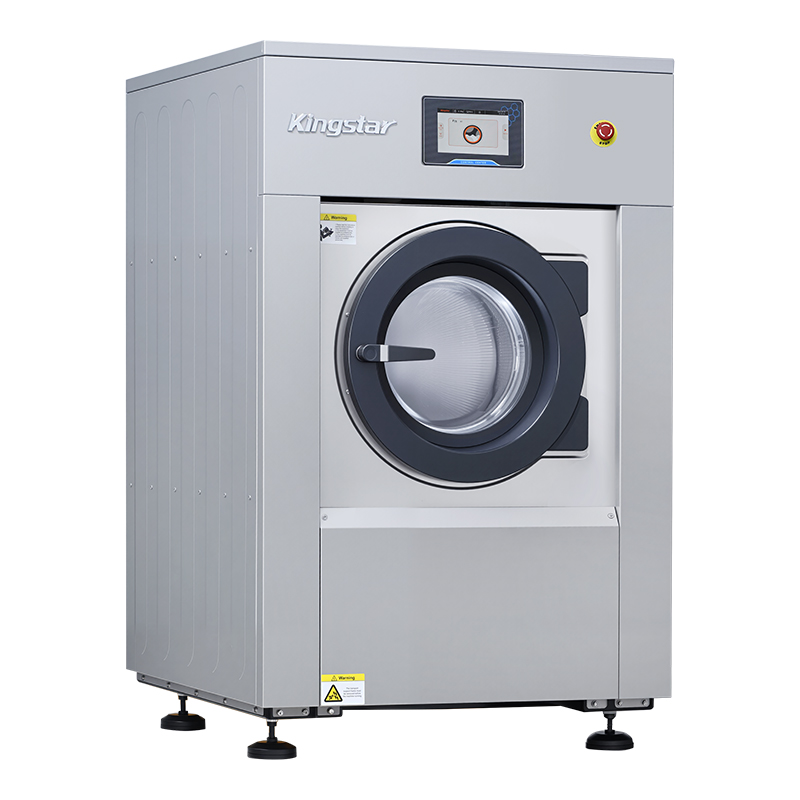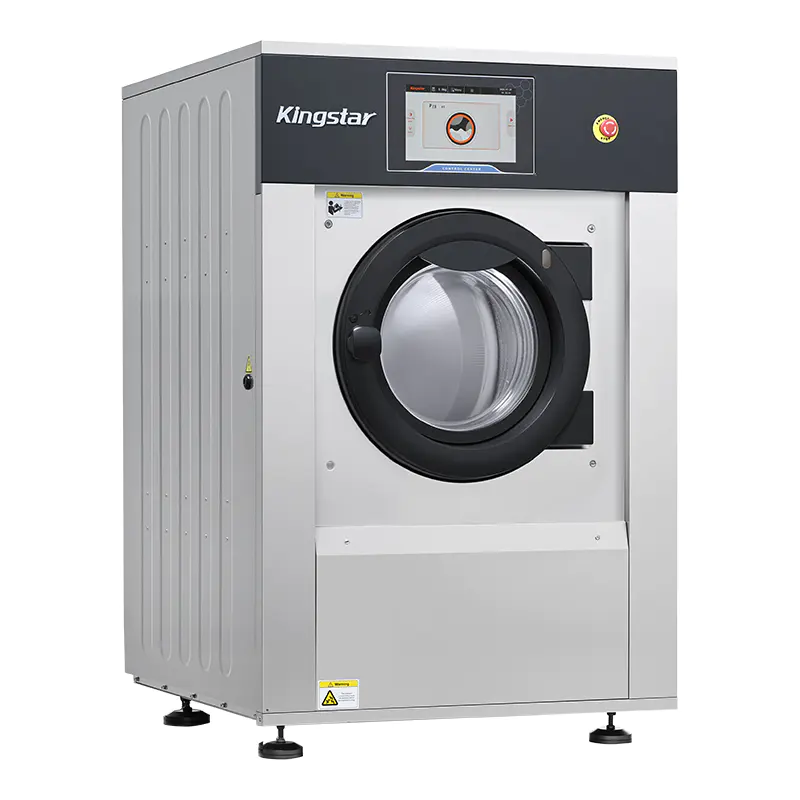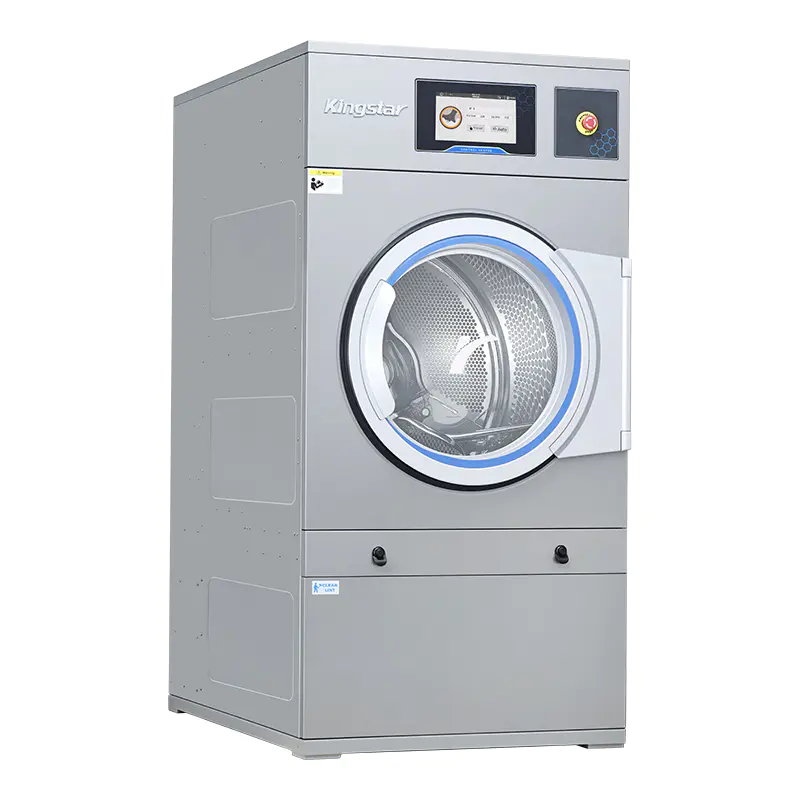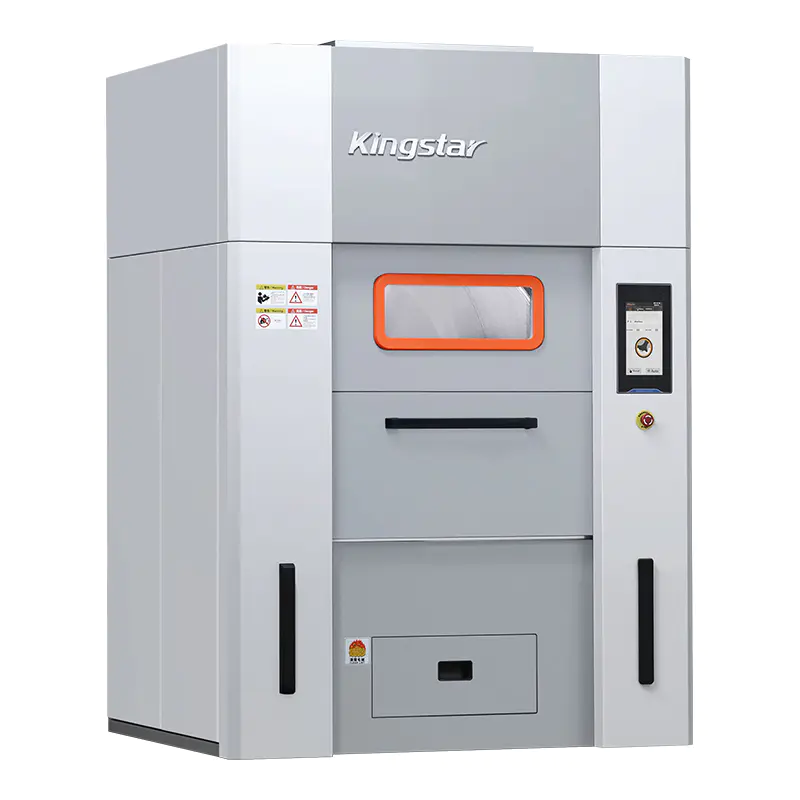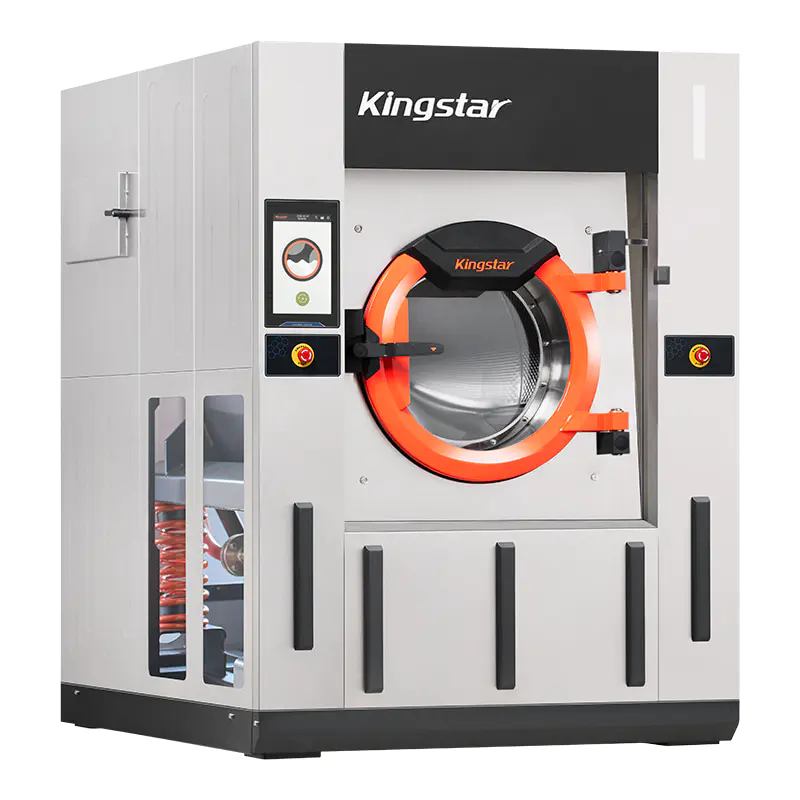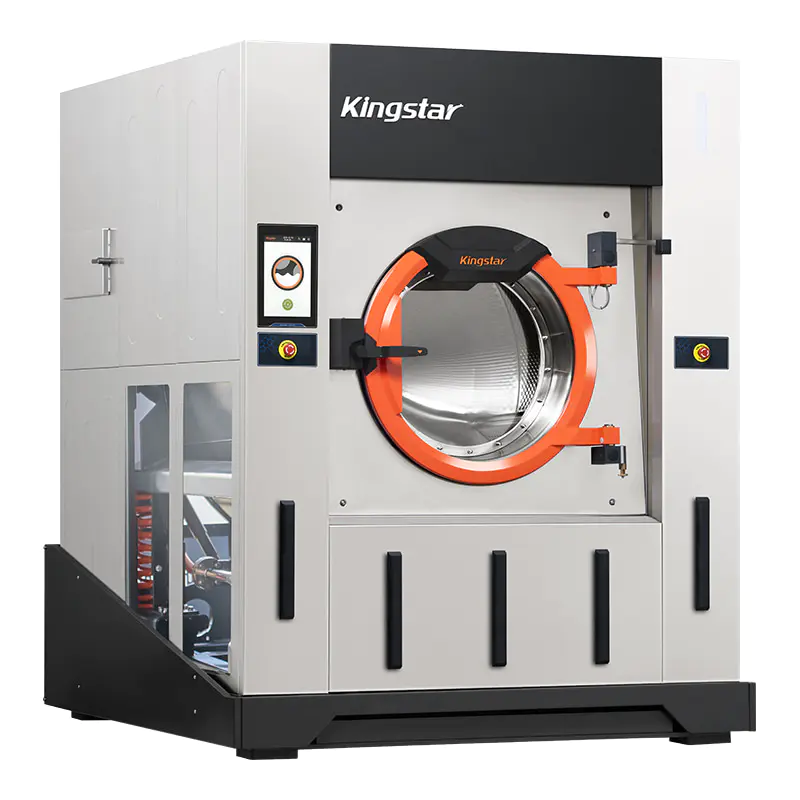
The Ultimate Guide to Coin-Operated Softmount Washers: Choosing, Installing, and Maintaining
Introduction to Coin-Operated Softmount Washers
Definition and Function of Coin-Operated Softmount Washers
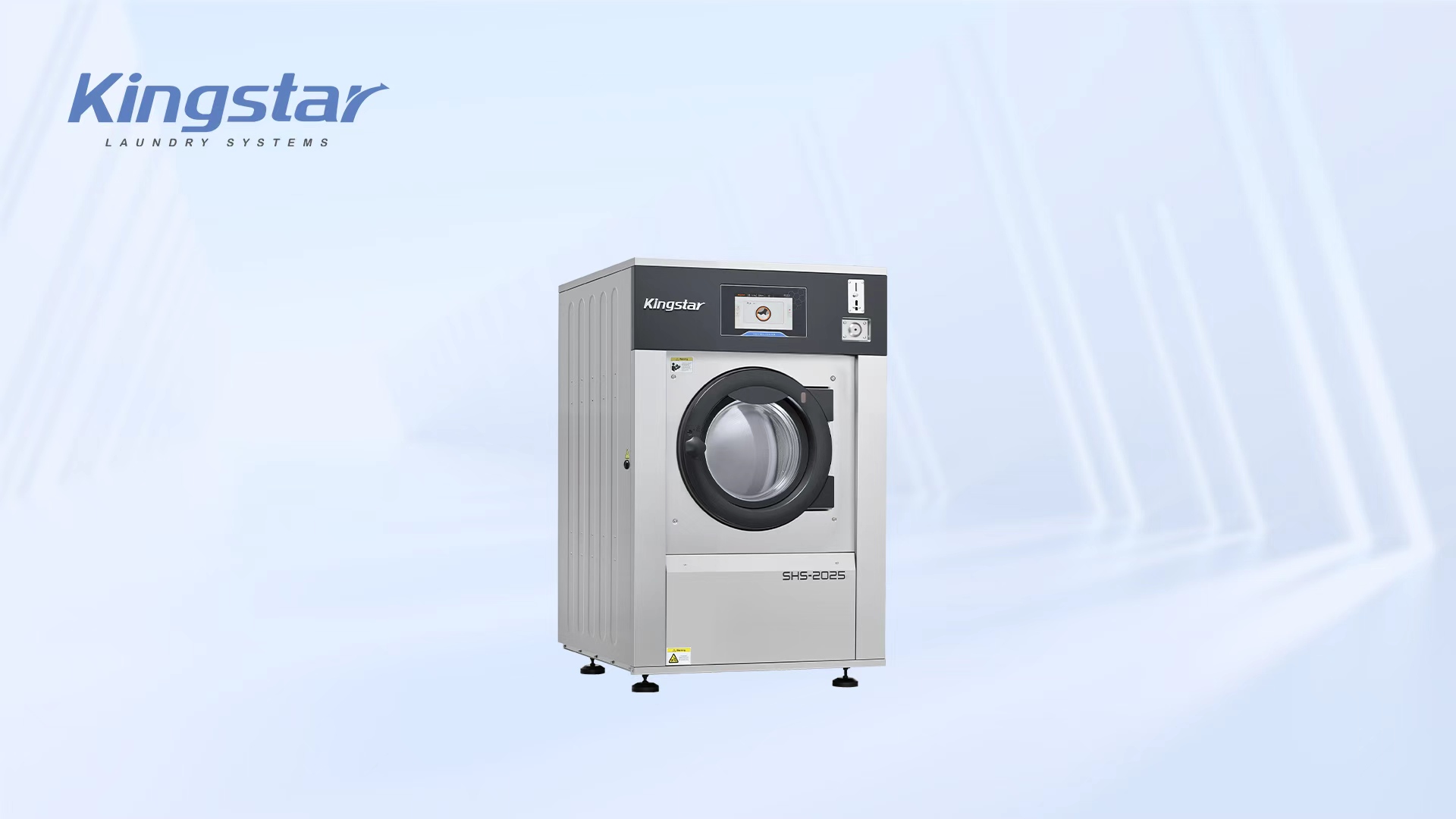
Coin-operated softmount washers are a specialized type of commercial washing machine designed for self-service laundry environments such as laundromats, apartment complexes, and institutional facilities. These machines are engineered to operate through a coin or card payment system, allowing users to pay per wash cycle. The “softmount” designation refers to the internal suspension system that isolates the drum from the frame, minimizing vibration and reducing the need for heavy-duty floor mounting. Unlike traditional hardmount washers that must be bolted to a reinforced concrete floor, softmount units can be installed on standard flooring, offering greater flexibility in location and ease of setup.
In the context of industrial laundry or commercial laundromat equipment, softmount washers provide a balance between efficiency and convenience. Their ability to absorb high-speed extraction forces internally makes them ideal for environments where structural limitations might prevent the installation of heavy machinery. Coin-operated versions combine this mechanical sophistication with payment automation, making them both user-friendly and economically efficient for business operators.
Key Structural Differences Between Softmount and Hardmount Washers
The most fundamental difference between a softmount and hardmount washer lies in the mounting system. A hardmount washer is directly anchored to a solid concrete base to control vibration during high-speed extraction. This anchoring requires structural preparation, typically limiting its installation to ground-level facilities with reinforced flooring. In contrast, a coin-operated softmount washer incorporates a suspension and shock-absorbing system that allows it to handle similar extraction speeds without transferring vibration to the floor. This makes it possible to install these washers on upper floors or areas with lighter structural support.
The difference in mounting design also affects installation costs, mobility, and operational noise levels. Softmount washers tend to have lower installation expenses since they do not require core drilling or reinforced foundations. Additionally, their suspension systems contribute to quieter operation, an important consideration in mixed-use buildings or multi-unit residential complexes. The following table summarizes the primary distinctions between the two washer types:
|
Feature |
Softmount Washer |
Hardmount Washer |
|
Installation Requirement |
Can be installed on most floors without bolting |
Requires reinforced concrete floor |
|
Vibration Control |
Internal suspension and shock absorption |
Controlled through rigid floor mounting |
|
Mobility |
Portable and easier to relocate |
Fixed installation |
|
Noise Level |
Generally lower |
Higher due to direct vibration transfer |
|
Common Applications |
Laundromats, apartments, hotels, healthcare |
Industrial laundry, ground-level commercial setups |
Advantages of Coin-Operated Softmount Washers
One of the most recognized advantages of a coin-operated softmount washer is its installation flexibility. Since it does not need a rigid base, it can be placed on upper floors or in buildings where concrete reinforcement is impractical. This adaptability allows commercial laundromat operators to optimize space utilization and open facilities in high-traffic areas such as apartment complexes, shopping centers, or university dormitories.
Softmount washers also feature higher extraction speeds compared to many hardmount models, reducing residual moisture in the fabrics after washing. This leads to shorter drying times and overall energy savings. For laundromat equipment operators, this translates into increased machine turnover, better energy management, and improved operational efficiency. Furthermore, the coin-operated mechanism automates billing and reduces labor costs by allowing unattended operation, a core benefit for self-service laundry environments.
Another advantage lies in their maintenance profile. The suspension system minimizes stress on the machine frame and floor, reducing wear over time. In addition, most modern commercial washing machine designs include smart diagnostic systems, allowing remote monitoring of usage, performance, and maintenance needs. This functionality enhances reliability while lowering downtime in high-demand laundromat environments.
Energy and Water Efficiency in Commercial Laundromats
Modern coin-operated softmount washers are engineered to support sustainability and resource conservation, essential qualities for industrial laundry and commercial laundromat settings. These washers typically feature advanced sensors and programmable wash cycles that adjust water levels, temperature, and detergent use according to load size. The result is reduced water consumption and more efficient energy use during operation. The ability to extract more water at high speeds during the final spin cycle also means less time and energy are needed for drying, reducing operational costs over time.
Softmount washers can be integrated with water recycling or reuse systems, making them suitable for eco-conscious laundromat businesses. Many models are also compatible with energy management systems that track consumption in real time, providing data that can be used to optimize operations. The table below highlights the typical resource efficiency features found in softmount washers compared to conventional models.
|
Efficiency Feature |
Softmount Washer |
Conventional Washer |
|
Water Level Adjustment |
Automatic, based on load sensors |
Manual or fixed levels |
|
Energy Monitoring |
Integrated digital control |
Limited or none |
|
Drying Time Impact |
Shorter due to high extraction |
Longer drying cycles required |
|
Water Reuse Compatibility |
Yes |
No |
|
Detergent Optimization |
Controlled dispensing system |
Manual dosing |
Applications of Coin-Operated Softmount Washers
Coin-operated softmount washers are used across a wide range of commercial and institutional settings due to their durability, ease of use, and installation flexibility. In commercial laundromats, they serve as the backbone of self-service washing operations, providing reliable performance for multiple users throughout the day. Their payment systems—whether coin, card, or mobile-based—allow for efficient and automated transactions, eliminating the need for staff supervision.
In apartment buildings and multi-family residential complexes, these washers offer shared laundry solutions that minimize the need for individual units in each apartment. Property managers benefit from reduced maintenance and centralized billing, while residents gain convenient access to commercial-grade laundry equipment. In hotels, healthcare facilities, and small industrial laundry operations, softmount washers are preferred for their ability to handle delicate fabrics, medical linens, or uniforms without requiring heavy structural modifications.
The growing popularity of cashless and digital payment systems has further increased the demand for these machines, as operators seek to modernize their laundromat equipment for greater efficiency and customer convenience. The adaptability of softmount washers makes them a logical choice for businesses aiming to expand or upgrade their laundry infrastructure.
Operational and Maintenance Considerations
Maintenance is a critical aspect of ensuring longevity and reliability in coin-operated softmount washers. Routine inspection of suspension components, seals, and bearings is essential to maintain smooth operation. Because these machines operate at high extraction speeds, balancing the load is crucial to avoid unnecessary strain on internal parts. Modern commercial washing machines are equipped with automatic load balancing technology that minimizes vibration and extends component life.
For laundromat operators, proper maintenance scheduling can significantly impact profitability. Preventive maintenance, including checking hoses, water inlet valves, and control panels, reduces the risk of downtime and extends the service life of the machines. Many manufacturers now provide remote diagnostic and control systems, allowing operators to monitor usage data and perform updates or troubleshooting remotely. This digital integration contributes to consistent performance and improved customer satisfaction in industrial laundry environments.
Spare part availability and service support are also key factors when selecting a coin-operated softmount washer. Because these machines are often in continuous use, timely access to parts and service reduces operational disruption. The modular construction of most softmount washers allows for easier repair and component replacement, further enhancing their practicality in commercial laundromat setups.
Softmount Washers in Modern Industrial Laundry Development
As the commercial laundry industry evolves, the demand for equipment that combines energy efficiency, structural flexibility, and automation continues to grow. Coin-operated softmount washers align with this trend by providing high-performance washing with minimal installation constraints. In large industrial laundry settings, they are often integrated into networked systems where multiple machines are managed via centralized control units. This connectivity allows for detailed tracking of wash cycles, maintenance intervals, and energy consumption metrics.
Additionally, advancements in software and control technologies have enhanced the adaptability of softmount washers to different types of loads, from delicate textiles to heavy-duty linens. Variable-speed motors, intelligent temperature regulation, and adaptive spin cycles enable efficient washing across a wide range of materials. In laundromat equipment planning, these features make softmount washers an integral component for facilities that prioritize both performance and user convenience.
The coin-operated softmount washer represents a combination of mechanical innovation and business practicality, offering a reliable, flexible, and efficient solution for laundromats, apartment buildings, and other commercial laundry applications. Its balance of technology, efficiency, and installation versatility continues to make it a cornerstone in the evolution of modern commercial washing systems.
Benefits of Using Coin-Operated Softmount Washers
Lower Installation Costs and Flexible Washer Placement
One of the primary benefits of using a coin-operated softmount washer is the significant reduction in installation costs compared to traditional hardmount systems. In a hardmount washer installation, the machine must be anchored to a solid concrete foundation to stabilize high-speed extraction cycles. This requirement increases construction time, adds expense, and restricts installation options to ground-level or reinforced areas. In contrast, a coin-operated softmount washer utilizes an internal suspension system that absorbs vibration and movement during operation. This design eliminates the need for bolting the washer to concrete floors, allowing it to be placed on standard surfaces such as tile, wood, or elevated floors without structural modification.
From an economic perspective, this flexibility is advantageous for both new laundromat businesses and existing facilities seeking to upgrade their laundry machine setup. The ability to install commercial washer and dryer units in non-reinforced environments reduces upfront investment and allows for quicker setup. This is particularly beneficial in multi-story buildings, apartment complexes, and leased retail spaces where heavy construction may be impractical. Coin operated laundry operators can expand services into a wider range of properties, including mixed-use buildings, where noise and vibration control are essential considerations. The table below summarizes the comparative installation costs between softmount and hardmount washers in various environments.
|
Installation Environment |
Softmount Washer |
Hardmount Washer |
|
Ground-Level Facility |
No foundation required, standard flooring acceptable |
Requires reinforced concrete foundation |
|
Upper Floor Installation |
Feasible with minimal floor reinforcement |
Generally not recommended |
|
Installation Time |
Shorter, plug-and-play setup |
Longer due to floor preparation |
|
Estimated Setup Cost |
Lower overall cost |
Higher due to construction needs |
Reduced Noise and Vibration for Improved Comfort
Another defining advantage of a coin-operated softmount washer is its ability to operate with lower noise and vibration levels. In traditional hardmount designs, vibration generated during high-speed spin cycles is transmitted directly to the floor, often creating noise and structural stress. Softmount washers, on the other hand, use advanced shock absorbers and suspension systems to isolate movement within the frame. This results in a quieter and smoother washing process, a key factor for facilities located in residential or mixed-use areas. In environments such as apartment buildings or coin operated laundry centers within shopping complexes, reduced vibration ensures comfort and minimizes disturbance to neighboring areas.
From a user’s standpoint, lower operational noise contributes to a better washing experience, especially in shared spaces. Commercial laundromat operators also benefit, as quiet and stable machines attract more customers and reduce maintenance issues related to vibration-induced wear. A properly balanced laundry machine not only extends its mechanical lifespan but also prevents structural damage to surrounding installations. The following table provides an overview of vibration and noise characteristics for typical washer configurations:
|
Feature |
Softmount Washer |
Hardmount Washer |
|
Vibration Transmission |
Isolated by suspension system |
Transferred to floor through direct mount |
|
Noise Level |
Lower due to internal damping |
Higher, especially during extraction |
|
Structural Impact |
Minimal |
Requires reinforced flooring |
|
Operational Environment |
Suitable for multi-story or residential |
Best for ground-level industrial use |
Easier Maintenance and Service Accessibility
Maintenance accessibility is another major reason why many operators prefer the coin-operated softmount washer in modern coin operated laundry facilities. Softmount washers are typically designed with front and top access panels that allow technicians to easily reach internal components such as belts, shock absorbers, and pumps. This simplifies routine maintenance, reduces service downtime, and minimizes labor costs. In addition, the absence of a bolted foundation makes it easier to move or reposition the machines for service, upgrades, or layout changes. For commercial washer and dryer setups, this feature is especially practical when reconfiguring laundromat spaces or replacing old machines with updated models.
From a technical standpoint, softmount washers experience less structural stress due to vibration isolation, which means components like bearings, seals, and frames tend to have longer service lives. Modern models are also equipped with diagnostic displays and sensor-based alerts that notify operators when maintenance is required. This proactive maintenance design enhances reliability and keeps the coin operated washing machine operational for longer periods, supporting consistent revenue generation in commercial laundromats. Furthermore, service access is simplified by modular designs that allow the replacement of key components without full disassembly, reducing both cost and downtime.
Improved Energy Efficiency and Water Usage
Energy efficiency is one of the most important factors in commercial laundry operations. Coin-operated softmount washers are often equipped with high-speed extraction systems that remove more water from garments during the spin cycle. This process reduces drying times and energy consumption in the companion dryers. Compared to older or hardmount models, these washers require less total energy per load, making them a practical choice for operators aiming to reduce utility costs and environmental impact. In coin operated laundry businesses where dozens of cycles occur daily, even small efficiency gains translate into substantial savings over time.
Water efficiency is another area where softmount washers excel. Most modern designs include load-sensing technology that automatically adjusts water levels based on the weight and type of fabric. This minimizes waste and ensures optimal washing results without excessive water use. These systems can be paired with programmable electronic controls that let operators customize wash cycles for different fabrics, soil levels, or detergent types. Many industrial and commercial washer and dryer manufacturers now incorporate eco-friendly features such as low-flow valves, recirculation pumps, and rinse optimization systems to further enhance resource efficiency.
The following table illustrates key efficiency parameters comparing traditional and modern coin-operated softmount washer designs.
|
Efficiency Aspect |
Coin-Operated Softmount Washer |
Conventional Washer |
|
Energy Usage |
Lower due to high-speed extraction |
Higher due to longer drying times |
|
Water Consumption |
Automatically adjusted per load |
Fixed or manual adjustment |
|
Cycle Time |
Shorter total wash and dry cycle |
Longer due to less efficient spin cycle |
|
Operational Cost |
Reduced over time |
Higher due to energy and water waste |
|
Environmental Impact |
Lower carbon footprint |
Moderate to high |
Operational Benefits in Commercial and Residential Laundry Environments
The design benefits of a coin-operated softmount washer extend beyond cost and efficiency, influencing daily operational convenience. For commercial laundromat owners, the ease of installation and maintenance means quicker business setup and fewer disruptions during equipment upgrades. In coin operated laundry systems within apartment complexes, softmount washers provide a dependable, low-noise washing solution that residents can operate independently. Since these washers are compatible with both coin and cashless payment systems, they integrate smoothly into modern self-service business models.
Softmount washers are also well-suited for hybrid laundry facilities that handle both public and staff-controlled washing operations, such as hospitals, hotels, and care institutions. Their internal suspension systems reduce wear and tear on surrounding infrastructure, lowering long-term building maintenance costs. Moreover, their compact and vibration-isolated design allows for space optimization, enabling more machines to be installed in a single area without structural reinforcement. This maximizes throughput in busy facilities where laundry volume is consistently high.
Integration of Technology in Modern Softmount Washers
Technological advancement has greatly enhanced the operational capabilities of the modern coin-operated washing machine. Many models now feature programmable logic controls (PLCs) and smart interfaces that allow operators to customize cycles, monitor performance, and access diagnostic data remotely. Integration with cloud-based systems means laundromat owners can track revenue, cycle count, and maintenance alerts in real time. For multi-location businesses, this digital connectivity streamlines management and supports predictive maintenance scheduling. In the context of energy management, some washers even include feedback loops that optimize spin speeds and water flow dynamically based on load conditions.
The application of such intelligent systems makes softmount washers an ideal component of smart laundromat infrastructure. Combined with commercial washer and dryer pairings, these technologies help operators achieve consistent performance, reduce downtime, and improve operational transparency. Additionally, digital control systems ensure accurate pricing and payment recording, reducing discrepancies in coin operated laundry environments. As sustainability standards continue to evolve, technological integration further ensures compliance with water and energy regulations, contributing to a cleaner and more efficient laundry industry overall.
Long-Term Economic and Environmental Benefits
From a long-term perspective, investing in coin-operated softmount washers offers both financial and environmental advantages. Reduced installation costs and lower operating expenses create a faster return on investment for laundromat owners and property managers. The machines’ efficient use of energy and water not only decreases utility bills but also aligns with environmental sustainability goals. In regions where water and energy costs are rising, these savings can be substantial over time. The ability to reuse or recycle greywater further enhances their appeal for eco-conscious commercial operators.
In addition, the lower noise and vibration levels contribute to better tenant satisfaction in residential coin operated laundry setups. The combination of user convenience, durability, and cost efficiency makes the coin-operated softmount washer an attractive choice for both small-scale and large-scale laundry operations. Over time, these washers support business growth through operational consistency, lower maintenance costs, and customer satisfaction—key factors in maintaining competitiveness within the commercial laundry industry.
Key Features to Consider When Choosing a Coin-Operated Softmount Washer
Capacity Options and Choosing the Right Load Size
When selecting a coin-operated softmount washer for commercial laundry solutions, capacity is one of the most important factors to consider. These washers are available in various sizes, typically ranging from 12 kg to 25 kg, designed to handle different laundry volumes depending on the application. Smaller capacity units, such as 12 kg or 15 kg models, are often suitable for apartment laundry rooms, small laundromats, or limited-space facilities where users wash smaller loads like uniforms, linens, or personal garments. Larger models, including 20 kg and 25 kg washers, are more commonly found in industrial laundry settings, hotels, and commercial laundromats that handle heavy-duty fabrics, towels, and bedding on a daily basis.
The appropriate washer capacity depends on several factors, including the expected number of users, laundry type, and available floor space. For coin operated laundry businesses, selecting a balanced mix of sizes can optimize service efficiency and customer satisfaction. For example, a laundromat might install multiple 15 kg washers for regular use and a few 25 kg washers for bulky items such as comforters or curtains. This diversity ensures that all users can find a suitable washer for their specific needs. When comparing softmount vs hardmount washer options, softmount models often provide higher flexibility in installation and space management, making them ideal for mixed-use laundry facilities where floor reinforcement may be limited.
|
Capacity Range |
Typical Application |
Recommended Setting |
|
12 kg |
Light laundry loads |
Apartment laundry, small laundromats |
|
15 kg |
Medium laundry loads |
Commercial laundromat, community laundry |
|
20 kg |
Heavy-duty laundry |
Hotels, industrial laundry |
|
25 kg |
Large-volume items |
Hospital laundry, linen services |
Understanding G-Force and Its Impact on Water Extraction
G-force, or gravitational force, refers to the centrifugal force applied during a washer’s spin cycle. It determines how much water is extracted from clothes before drying. In a coin-operated softmount washer, higher G-force ratings mean faster spin speeds and better water removal efficiency. The level of G-force is measured relative to gravity; for example, a washer operating at 300 G generates a centrifugal force 300 times greater than the Earth’s gravity. High G-force washers significantly reduce drying time, improving energy efficiency in commercial laundromat operations.
In a commercial washing machine setup, choosing the right G-force depends on the type of fabrics being processed. Delicate items like silk or lightweight garments require lower spin speeds, around 100–150 G, to prevent damage. Heavier materials such as towels, workwear, or industrial fabrics benefit from 300–400 G, as more water extraction shortens drying cycles. Coin-operated softmount washers typically feature programmable G-force settings, allowing operators to adjust the extraction speed based on specific wash cycles. Compared to hardmount washers, softmount units achieve higher G-forces without transferring vibration to the floor, offering better overall control and quieter operation.
|
G-Force Level |
Fabric Type |
Typical Application |
|
100–150 G |
Light fabrics, delicates |
Apartment laundry, small laundromat |
|
200–250 G |
Mixed fabric loads |
Commercial laundromat |
|
300–400 G |
Heavy-duty textiles |
Industrial laundry, hotels |
Energy Efficiency and Resource Management
Energy efficiency is a key consideration for any commercial washer and dryer system. A coin-operated softmount washer is typically designed to consume less water and electricity compared to traditional washers, making it an attractive option for laundromat equipment operators who aim to reduce operational costs. Modern machines feature intelligent sensors that adjust water levels according to the load weight and fabric type, preventing unnecessary waste. They also include optimized spin cycles that extract more water, thereby reducing the drying time and energy use of companion dryers.
In industrial laundry environments, where machines may operate continuously throughout the day, small improvements in energy consumption lead to substantial savings over time. Many new models incorporate eco-friendly technologies, such as low-flow rinse systems, variable-frequency drives, and high-efficiency motors. These advancements make the coin-operated washing machine both cost-effective and environmentally responsible. In coin operated laundry settings located in regions with strict energy regulations, these energy-saving features help businesses comply with local standards while maintaining consistent performance.
Durability and Build Quality
The durability of a coin-operated softmount washer directly affects its long-term return on investment. Since these machines are used frequently in laundromats and industrial laundry facilities, they must be built from materials capable of withstanding constant operation. Most high-quality commercial washing machines feature an outer drum and inner basket made from 304 stainless steel, which offers resistance to corrosion, moisture, and detergent chemicals. This material choice ensures structural integrity, prevents rusting, and extends the life of the washer even under heavy-duty usage.
Other construction features to look for include reinforced bearings, robust suspension systems, and industrial-grade motors. These components reduce wear and maintain performance consistency across thousands of cycles. Warranty coverage also plays a vital role in assessing build quality. Manufacturers typically offer warranties ranging from one to five years, depending on the model and usage category. For coin-operated washing machines in commercial laundromats, an extended warranty can provide additional security against mechanical failures, particularly for machines running multiple shifts per day.
|
Component |
Material/Feature |
Benefit |
|
Drum and Basket |
304 Stainless Steel |
Corrosion resistance and long lifespan |
|
Suspension System |
Heavy-duty springs and dampers |
Reduces vibration and noise |
|
Bearings and Seals |
Industrial-grade design |
Prevents leakage and wear |
|
Frame Construction |
Powder-coated steel or alloy |
Structural stability and durability |
Coin System and Payment Mechanisms
The coin system is a defining feature of any coin-operated softmount washer. These systems can be either mechanical or electronic, depending on the model and intended use. Mechanical coin mechanisms are straightforward, durable, and suitable for areas with limited access to digital payment infrastructure. Electronic coin systems, however, provide greater flexibility, allowing integration with multiple payment methods such as tokens, smart cards, or mobile payment apps. This makes them more adaptable to modern coin operated laundry environments where customers prefer cashless transactions.
Advanced coin systems also allow for programmable pricing, enabling laundromat operators to set custom wash prices depending on the cycle type, time of day, or fabric load. For instance, a commercial laundromat may offer discounted rates during off-peak hours to attract customers. Coin mechanisms integrated with digital controls also record transaction data for accounting and performance tracking. This level of transparency supports efficient management of laundromat equipment and reduces the risk of revenue discrepancies. Whether mechanical or electronic, a reliable coin system ensures consistent operation and user convenience, key elements for maintaining customer satisfaction.
Programmability and Control Features
Modern coin-operated softmount washers come equipped with programmable control panels that enhance usability and operational efficiency. These control systems allow operators to configure multiple wash programs tailored for different fabrics and soil levels. Common cycle options include delicate, normal, heavy-duty, and quick wash, each optimized for specific applications in commercial laundromats or industrial laundry facilities. Advanced models feature touch-screen interfaces or digital displays, making it easier for users to select and monitor wash cycles.
For operators, programmable controls provide the ability to adjust cycle parameters such as water temperature, spin speed, detergent dosing, and rinse frequency. This flexibility allows customization based on user demand or fabric requirements. Additionally, these controls can store usage data, helping laundromat owners analyze performance trends and plan maintenance schedules. User-friendly interfaces also minimize training time for staff in larger facilities and improve accessibility in self-service coin operated laundry settings. Over time, programmable controls contribute to consistent washing performance, efficient resource use, and better machine longevity.
Water Usage and Conservation Features
Water usage is a significant operational factor in any commercial washing machine. A coin-operated softmount washer is designed to optimize water consumption through load-sensing and automatic adjustment systems. These technologies measure the load weight and fabric type before determining the appropriate water level for each cycle. As a result, the washer minimizes waste while maintaining effective cleaning performance. In a commercial laundromat, where dozens of cycles run daily, these small savings accumulate into meaningful reductions in water costs and environmental impact.
Modern washers may consume between 10 to 15 gallons per cycle, depending on capacity and wash settings. Some models incorporate recirculation systems that reuse rinse water for prewash stages, further enhancing efficiency. Water-saving features are particularly valuable in industrial laundry facilities operating under sustainability initiatives or water usage restrictions. Compared with hardmount washers, softmount models provide greater control over consumption, making them suitable for coin operated laundry businesses seeking to balance performance with eco-conscious operation. The table below provides a typical comparison of water consumption levels among different washer types.
|
Washer Type |
Average Water Usage (Gallons per Cycle) |
Efficiency Level |
|
Coin-Operated Softmount Washer |
10–15 gallons |
High efficiency |
|
Hardmount Washer |
18–25 gallons |
Moderate efficiency |
|
Conventional Top-Load Washer |
30–40 gallons |
Low efficiency |
Integration with Commercial Laundry Operations
Coin-operated softmount washers are designed to meet the operational needs of diverse laundry environments, from small apartment laundry rooms to large-scale industrial laundry facilities. Their flexibility, reduced installation requirements, and advanced features make them an integral part of commercial laundry solutions. By offering better vibration isolation and energy management, they are easier to integrate with existing laundromat equipment without requiring major infrastructure upgrades. The combination of high-speed extraction, programmable control, and low water consumption ensures reliable operation even in high-demand commercial laundromats.
In comparison with other washer types, the softmount design supports easier washer installation and maintenance, making it ideal for both new and established coin operated laundry businesses. Operators benefit from lower long-term costs, improved reliability, and customer satisfaction driven by consistent washing performance. Whether used in a commercial washer and dryer system or as part of a full-service laundromat, coin-operated softmount washers provide balanced performance that meets the technical and financial requirements of modern laundry management.
Maintenance and Troubleshooting for Coin-Operated Softmount Washers
Routine Washer Maintenance for Consistent Performance
Proper maintenance of a coin-operated softmount washer is essential for ensuring long-term reliability and efficient performance in commercial laundromat environments. Whether the machine is used in a busy laundromat, apartment complex, or industrial laundry facility, keeping it in optimal working condition helps reduce downtime and prevent costly repairs. Regular washer maintenance tasks include inspecting water hoses for wear or leaks, cleaning lint traps, and checking the drain system for obstructions. The drum and gasket areas should also be wiped down periodically to prevent detergent buildup and unpleasant odors. Compared to a hardmount washer, the softmount design provides easier access to internal components, making maintenance less complicated and reducing service time during routine checkups.
Cleaning and Care of Key Components
Maintaining the cleanliness of essential components in a coin operated washing machine is vital to sustaining efficient performance. The detergent dispenser and water inlet filters should be cleaned regularly to avoid residue accumulation, which can affect water flow and detergent dilution. Lint traps and drain filters must be checked after several wash cycles to prevent clogging that could reduce the washer’s drainage capability. Additionally, inspecting the door seals and ensuring they remain pliable helps prevent leaks around the loading area. In a coin operated laundry environment where machines operate frequently, cleaning schedules should be standardized to ensure consistency and prevent mechanical wear. A properly maintained commercial washing machine will offer reliable results while minimizing water and energy consumption.
Inspecting Hoses, Belts, and Connections
One of the most critical aspects of washer maintenance involves inspecting the hoses, belts, and electrical connections. The inlet and outlet hoses must be checked for cracks or bulges that may lead to leaks. Tightening hose connections and replacing worn gaskets can prevent water wastage and avoid interruptions in operation. For belt-driven systems, monitoring belt tension and wear is crucial to avoid drum rotation issues. Electrical connections in a coin-operated softmount washer should also be checked to ensure that the coin mechanism and control panels are functioning properly. In commercial laundromat environments, where multiple machines run continuously, proactive replacement of these parts prevents unexpected breakdowns and reduces downtime, ensuring consistent service for users.
Common Problems and Troubleshooting Techniques
Even with routine maintenance, occasional malfunctions can occur in a coin-operated softmount washer. One common issue is water leakage, which can stem from a damaged door seal, loose hose connections, or a blocked drain. To troubleshoot leaks, operators should first inspect visible connections before examining the internal pump assembly. Another frequent issue involves error codes displayed on digital panels. These may indicate problems with water level sensors, temperature control, or door lock mechanisms. A structured troubleshooting process includes resetting the control system, checking for sensor blockages, and verifying that power supply levels are stable. The washer’s service manual provides diagnostic details that allow laundromat operators to identify specific faults quickly and reduce downtime. In commercial laundry environments, timely troubleshooting ensures minimal disruption to customer service.
Balancing and Vibration Control
One advantage of the softmount vs hardmount washer design is the advanced suspension system that absorbs vibration. However, improper loading or an unbalanced drum can still cause excessive vibration during high-speed extraction cycles. If vibration issues occur, users should check whether the load is evenly distributed and verify that the machine is placed on a level surface. The suspension springs and shock absorbers should be examined periodically for signs of wear. Replacing damaged components restores stability and reduces operational noise. Consistent monitoring of the washer’s balance helps protect surrounding equipment in industrial laundry settings, especially when multiple machines operate in close proximity. Maintaining a stable operation also reduces long-term stress on the washer’s frame and bearings, extending overall service life.
Electrical System and Control Panel Maintenance
The electrical system of a coin operated washing machine includes the motor, sensors, coin mechanism, and control panel. Keeping these parts in good condition is essential for safe and consistent operation. Dust and moisture can cause corrosion or short circuits, so the electrical panel should be inspected regularly and cleaned with appropriate tools. The coin-operated system should also be checked for jams, misaligned sensors, or foreign objects that may block coin acceptance. For washers installed in commercial laundromats, it is advisable to have a maintenance schedule that includes functional testing of circuit boards and switches. Technicians should ensure that software updates or programmable settings are operating correctly to maintain consistent wash cycles and payment functions.
Preventing and Fixing Drainage Problems
Drainage problems are among the most common issues in commercial washer and dryer systems. A coin-operated softmount washer relies on proper drainage to ensure effective rinsing and spinning. When water remains in the drum after a wash cycle, it may indicate a clogged drain hose or pump filter. Cleaning these components regularly prevents residue buildup that can restrict water flow. Additionally, checking the drain valve’s operation ensures that it opens and closes correctly during cycles. If drainage issues persist, technicians should inspect the control board signals that trigger pump activation. In high-volume coin operated laundry environments, regular drain maintenance prevents overflow situations and maintains consistent wash quality for customers.
Extending the Service Life of Coin-Operated Softmount Washers
Extending the lifespan of a coin-operated softmount washer requires consistent care, proper usage, and adherence to recommended service intervals. Overloading the drum or using excessive detergent can cause premature wear on mechanical components. Ensuring that the machine is properly balanced and level also reduces stress on internal bearings. In addition, operators should use cleaning agents compatible with stainless steel drums and water inlets to prevent corrosion. Maintaining proper ventilation in the laundry area prevents overheating of electronic components. When combined with timely inspections and repairs, these practices can extend the operational life of the machine well beyond the average service period expected in commercial laundromat or industrial laundry applications.
Comparative Maintenance Chart for Coin-Operated Softmount vs Hardmount Washers
The following table compares typical maintenance considerations for coin-operated softmount and hardmount washer systems, offering insight into service requirements and user convenience in commercial laundry environments.
|
Feature |
Coin-Operated Softmount Washer |
Hardmount Washer |
|
Installation Requirements |
Does not require concrete foundation; easier to install |
Requires rigid floor mounting and anchoring |
|
Vibration Control |
Suspension system minimizes vibration during operation |
Higher vibration due to fixed mounting design |
|
Maintenance Accessibility |
Front panel and component access for quicker servicing |
Requires more disassembly for internal repairs |
|
Energy and Water Efficiency |
Optimized for water-saving and energy-efficient operation |
Higher water and energy use per cycle |
|
Service Frequency |
Lower due to flexible suspension and reduced stress |
Higher because of mechanical rigidity and vibration stress |
Routine Maintenance Schedule Recommendations
Developing a regular washer maintenance schedule helps operators maintain consistent performance and minimize repair costs. The table below outlines recommended service intervals for key components of a coin-operated washing machine.
|
Component |
Maintenance Task |
Frequency |
|
Water Hoses |
Inspect for leaks or cracks and replace as needed |
Every 3 months |
|
Lint Trap and Drain Filter |
Clean and remove debris to ensure smooth drainage |
Weekly |
|
Coin Mechanism |
Check for jams, clean sensors, and calibrate pricing system |
Monthly |
|
Door Seal |
Inspect for wear and clean to prevent leaks |
Bi-monthly |
|
Electrical Components |
Check connections and clean dust or corrosion |
Quarterly |
|
Suspension System |
Inspect springs and shock absorbers for wear |
Annually |
Professional Service and Technical Support
For coin operated laundry operators managing multiple machines, establishing a relationship with certified service technicians ensures that issues are diagnosed accurately and resolved efficiently. Professional service teams can conduct comprehensive inspections that include motor testing, software diagnostics, and control panel calibration. They can also assist with component replacement using manufacturer-approved parts, ensuring continued compliance with safety standards. Regular professional maintenance, combined with operator-level care, reduces unplanned downtime and maintains customer satisfaction in commercial laundromat operations. Access to reliable technical support contributes to the smooth operation of the entire laundry machine fleet, allowing business owners to focus on productivity and customer service rather than constant equipment repairs.
ADD:No.388 Xinggang Road, Chongchuan District, Nantong City, 226000, Jiangsu Province, China.
-
Phone: +86-13917089379
-
Tel:+86-13917089379
-
Fax:+86-0513-85663366
-
E-mail:[email protected]
